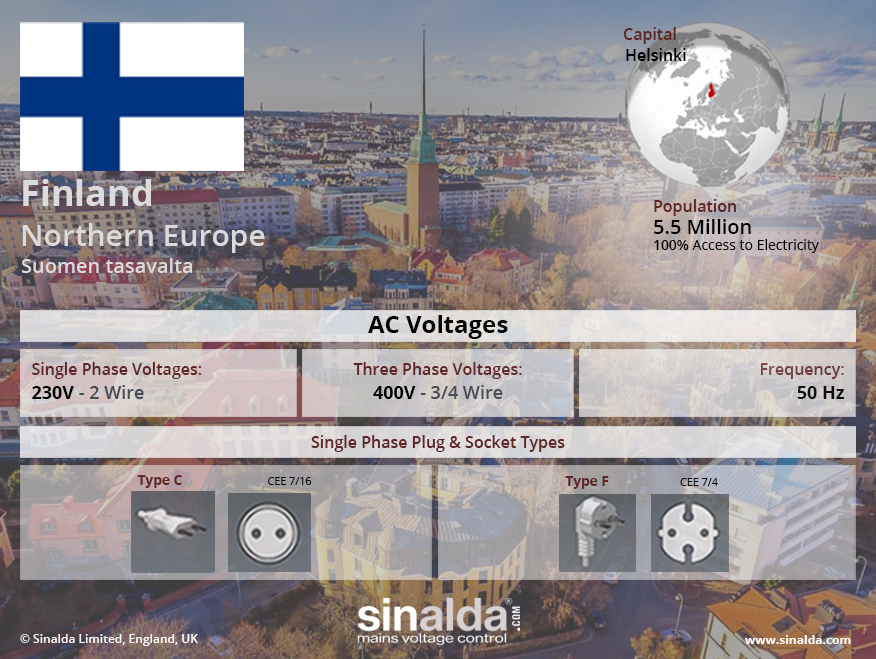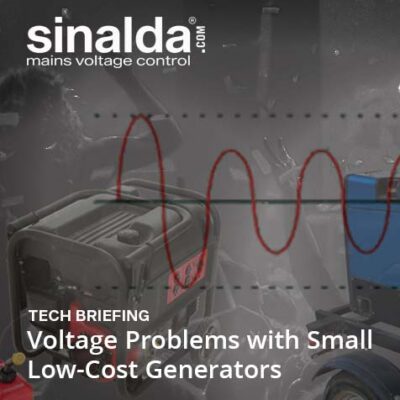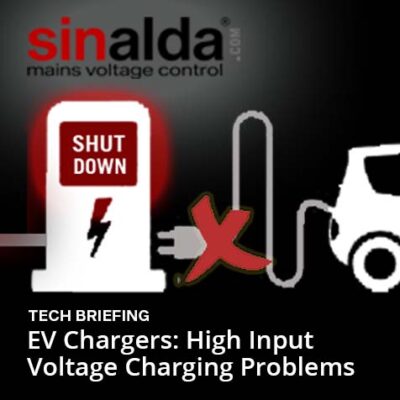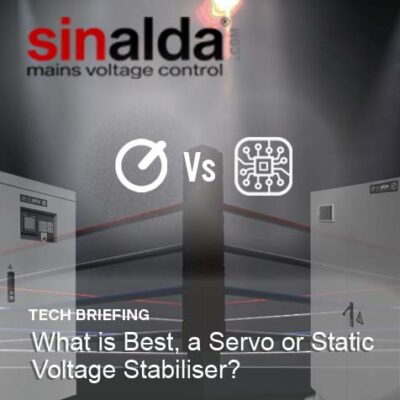Last Updated: 01 May 2023

Copyright 2023 Sinalda. Permission to use this image is granted subject to appropriate credit being given to www.sinalda.com as the source.
Power Quality in Finland
Finland is a highly developed and modern country in Northern Europe, known for its high standard of living and advanced technology. The country has made significant progress in its energy sector over the years, with a particular focus on renewable energy sources. As a result, electricity consumers enjoy a reliable and increasingly green power supply.
Power Sector in Finland
Electricity consumption in Finland has remained relatively stable in recent years, with the country consuming around 85-90 terawatt-hours (TWh) of electricity annually. The industrial sector is Finland’s largest electricity consumer, followed by households and the service sector.
In Finland, electricity is mainly produced by nuclear, hydroelectric, and thermal power plants. The country has five nuclear reactors that generate the lion’s share of the country’s electricity needs. The rest of the electricity is generated by hydropower and thermal power plants, with wind power also contributing to the energy mix. Historically, Russia has been a key source of Finland’s energy imports. Following Russia’s recent invasion of Ukraine, Finland has taken several positive steps to end any remaining reliance on Russian energy imports.
Finland has set a target to become carbon-neutral by 2035, and it has already made notable progress towards this target, seeing strong growth in onshore wind generation, for example. It has also commissioned the first new nuclear reactor in Europe in over 15 years, which started commercial operation in April 2023. With a sixth nuclear power plant in the planning, nuclear should deliver over 60% of the nation’s electricity needs in the foreseeable future.
The electricity supply network in Finland is known for its reliability and high-quality service. The country has a decentralized power grid, which means that electricity is generated and distributed locally, and there are few long-distance transmission lines. This decentralization helps to reduce the risk of power outages, as any faults in the network are isolated and can be quickly fixed.
Finland has invested heavily in its electricity infrastructure over the years, with significant upgrades made to the power grid to improve its reliability and resilience. The country has a modern and well-maintained electricity grid that is equipped with advanced technologies to detect and isolate any faults quickly.
In addition, Finland has a robust emergency response system to deal with potential power outages. The system includes contingency plans, emergency equipment, and trained personnel who can respond quickly during a power outage.
Conclusion
In conclusion, the electricity supply network in Finland is known for its reliability and high-quality service. The country has invested heavily in its electricity infrastructure over the years, with significant upgrades made to the power grid to improve its reliability and resilience. With a growing focus on renewable energy sources, Finland is well-positioned to continue providing a reliable and sustainable electricity supply to its citizens and businesses.
Share your Views and Experiences
Every reasonable effort is made to ensure that the information provided above is accurate. No guarantees for the accuracy of the information is made.
So we are able to keep the content updated, and actual on the ground experiences can be shared with others, please feel free to contact us.







